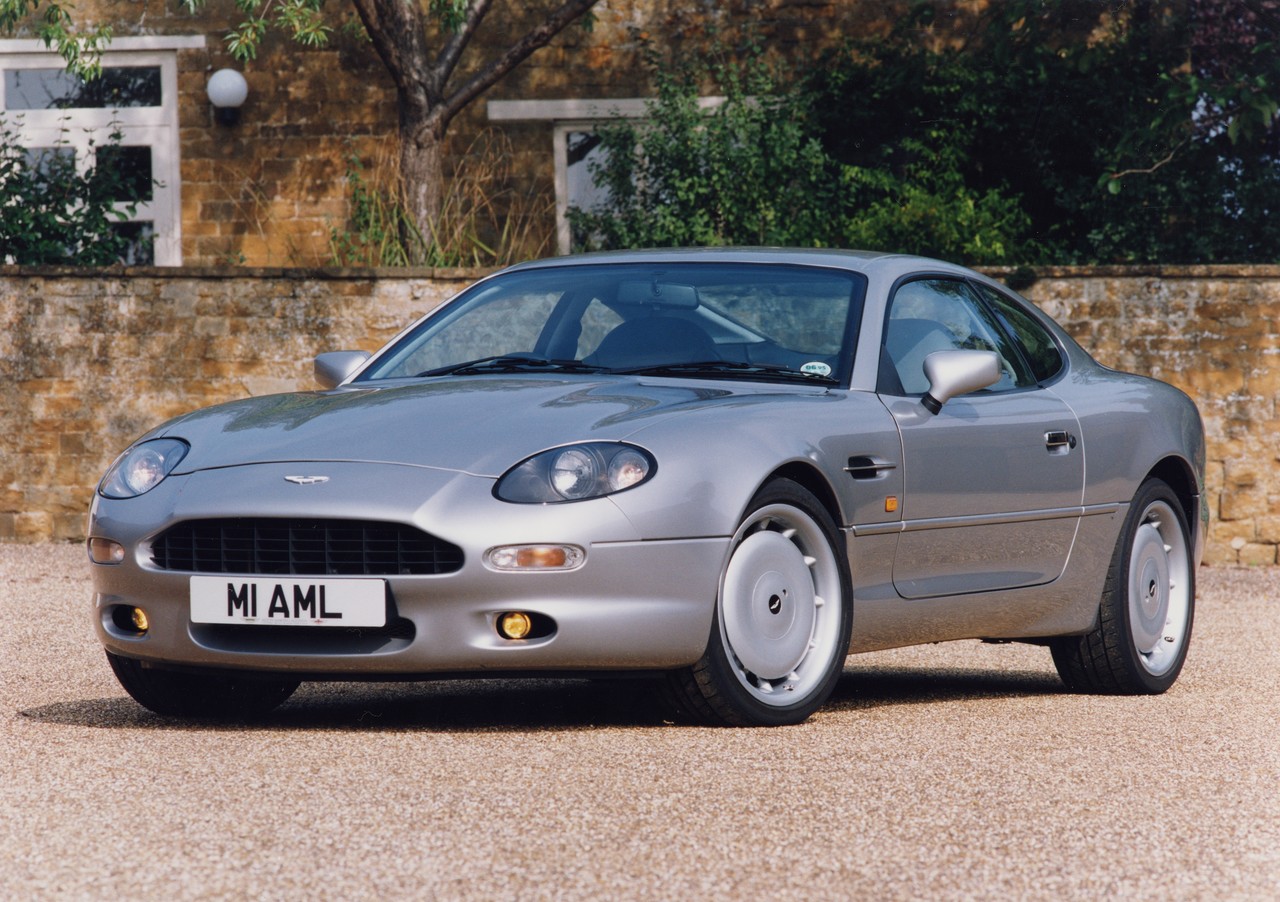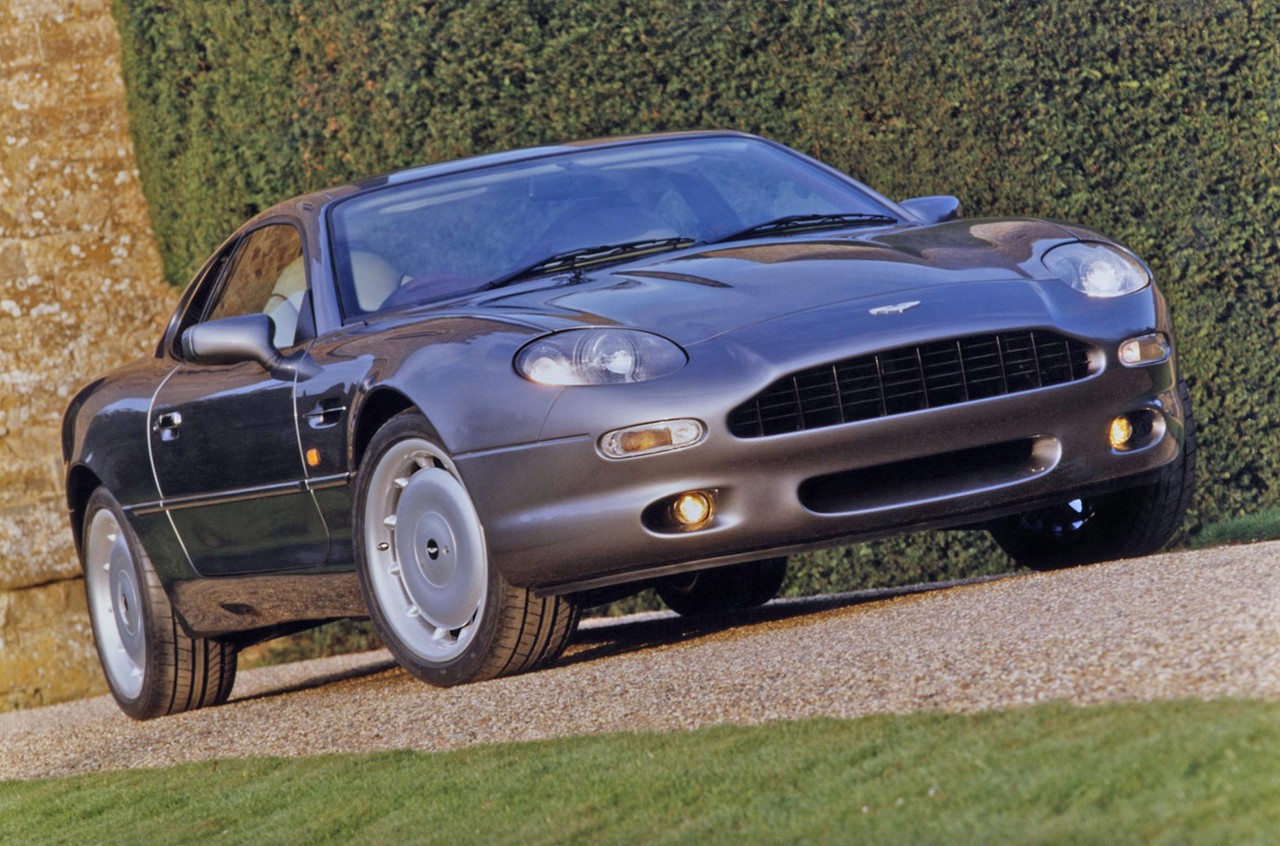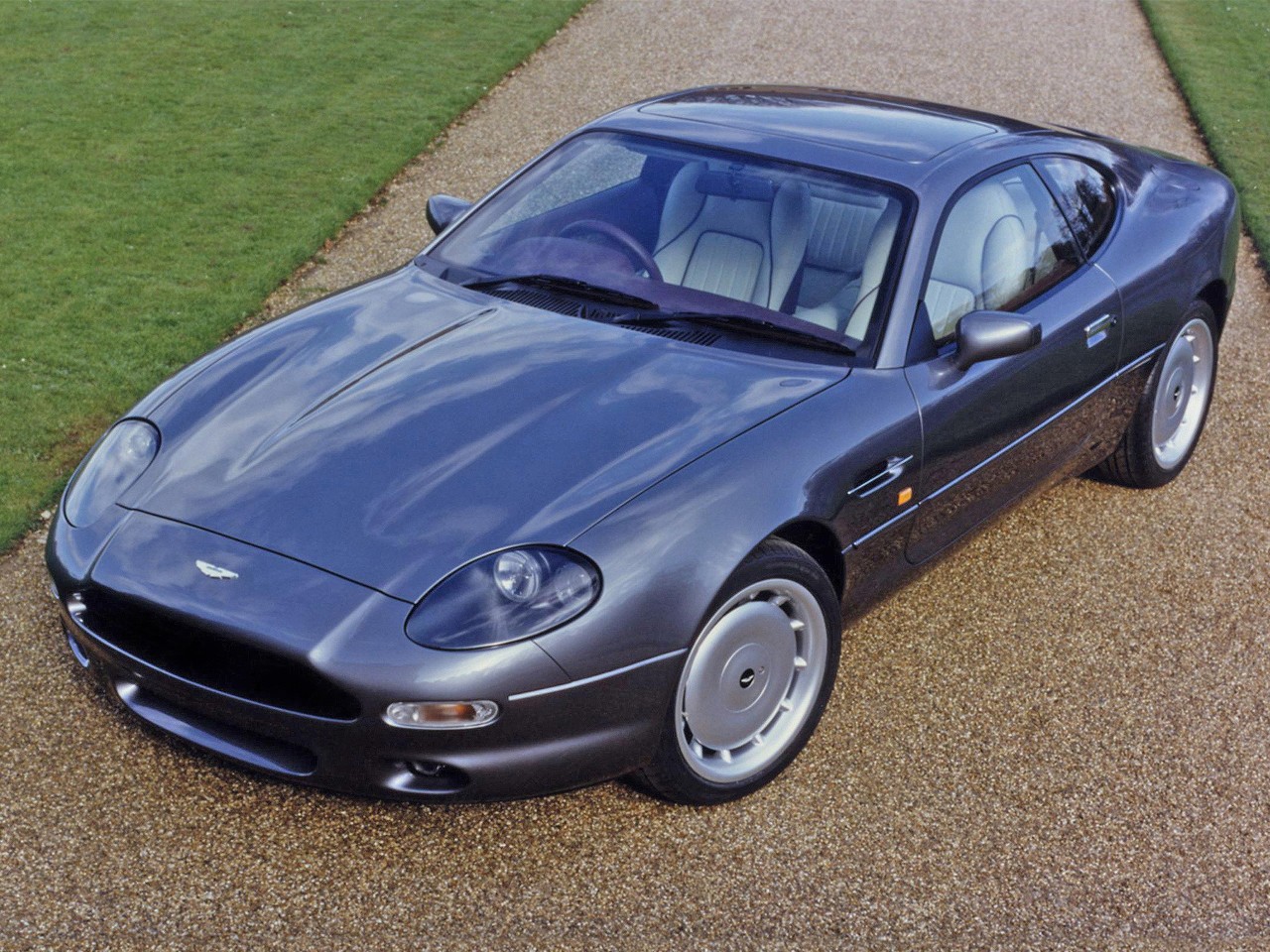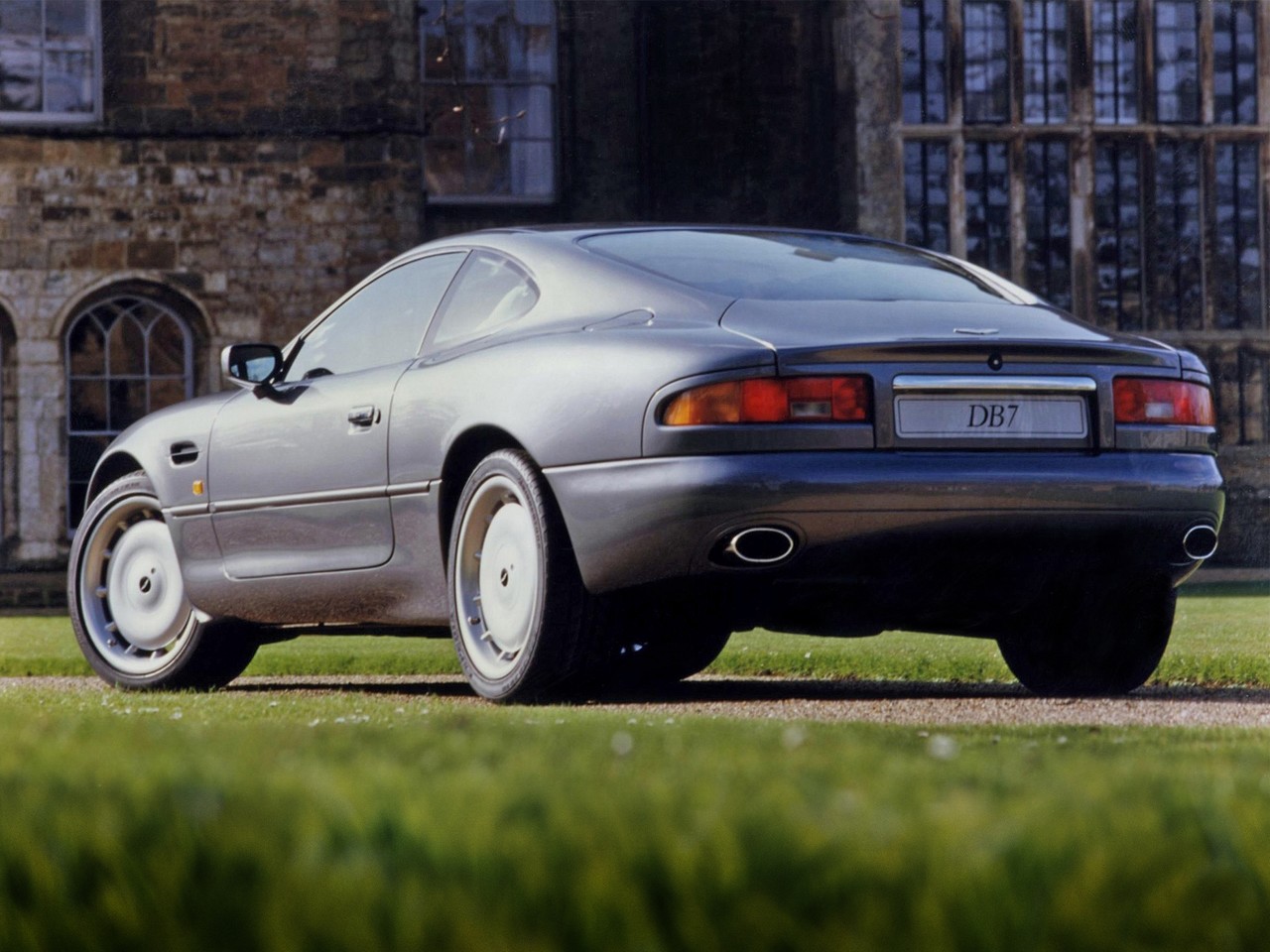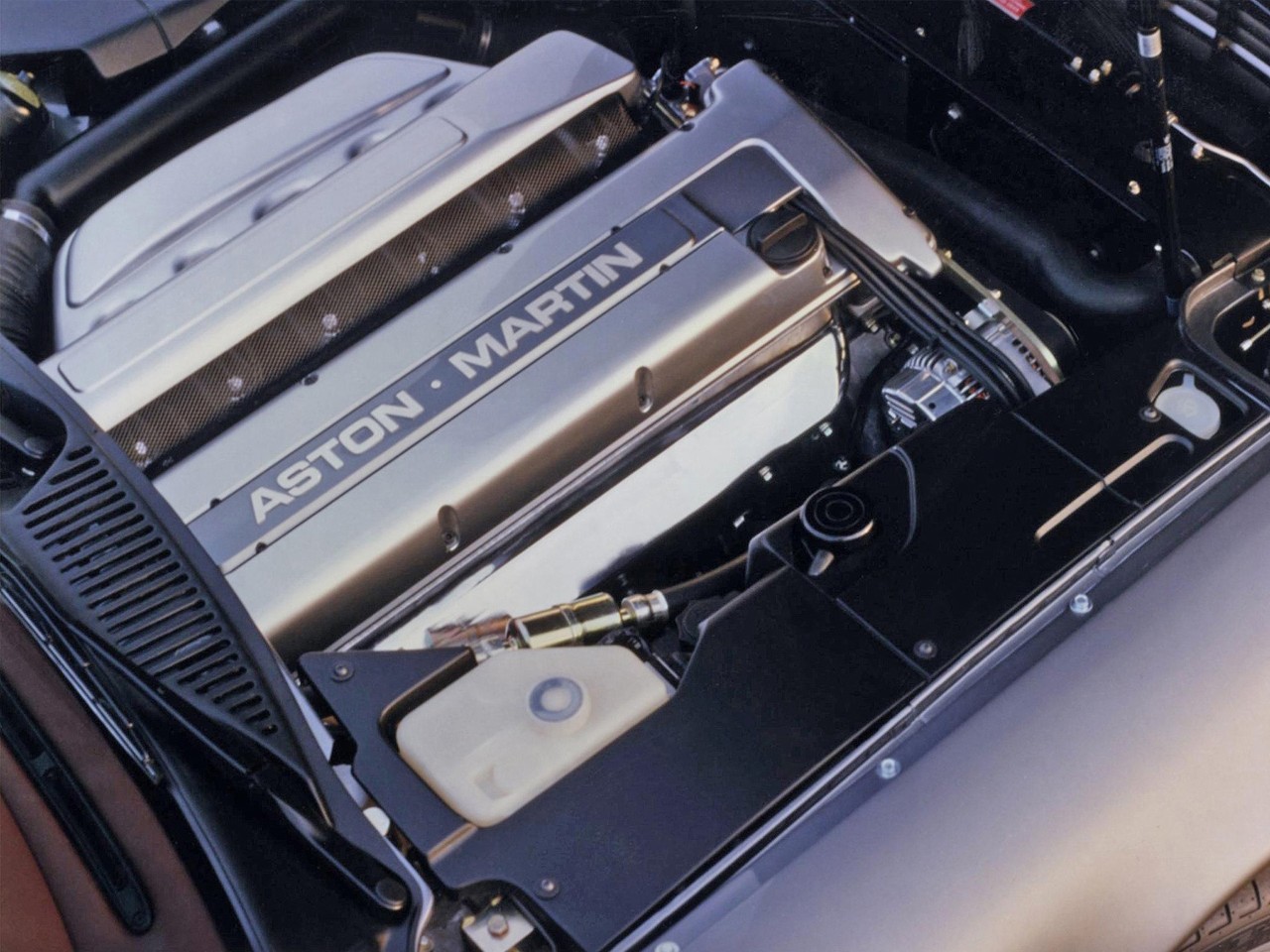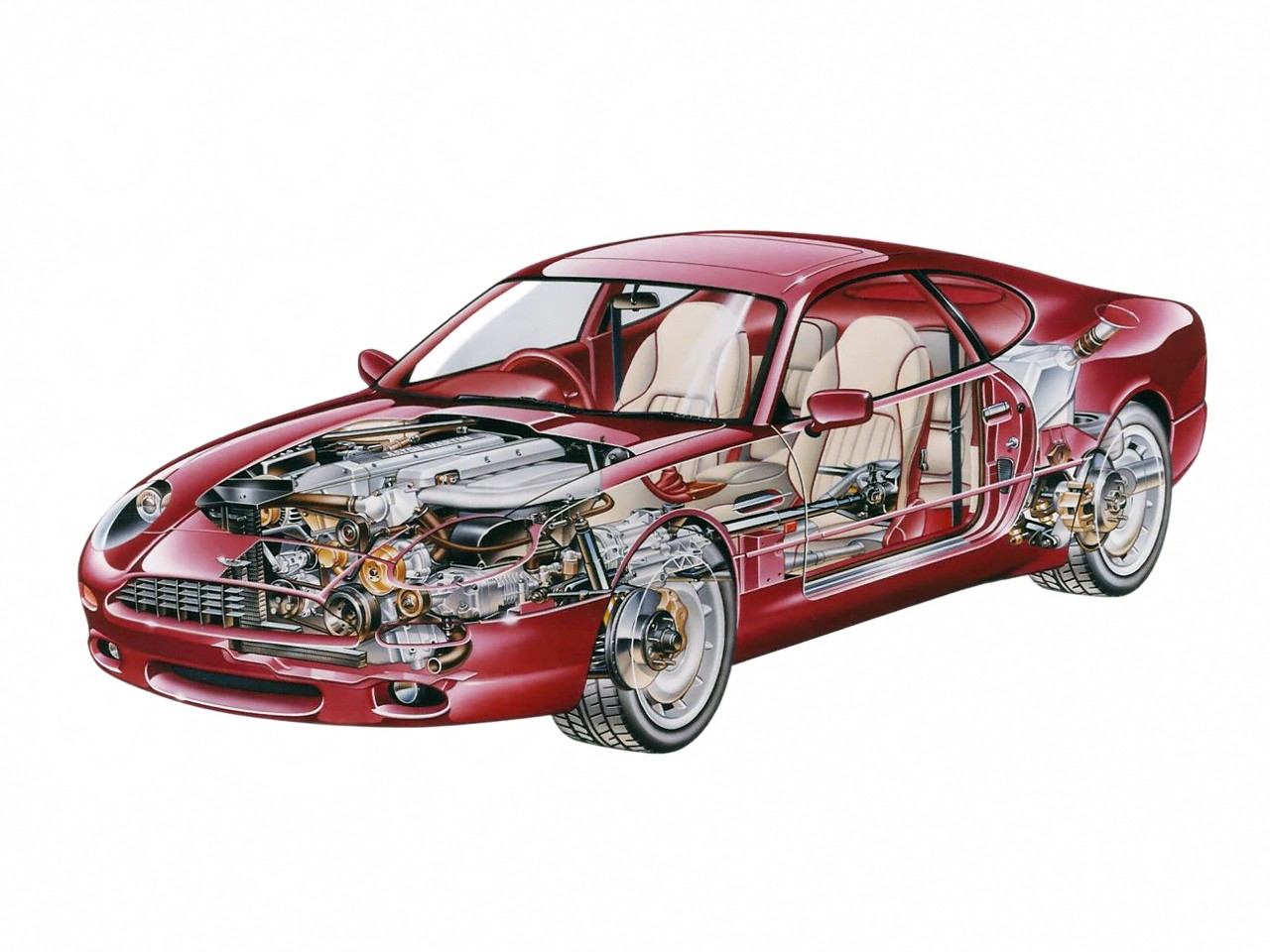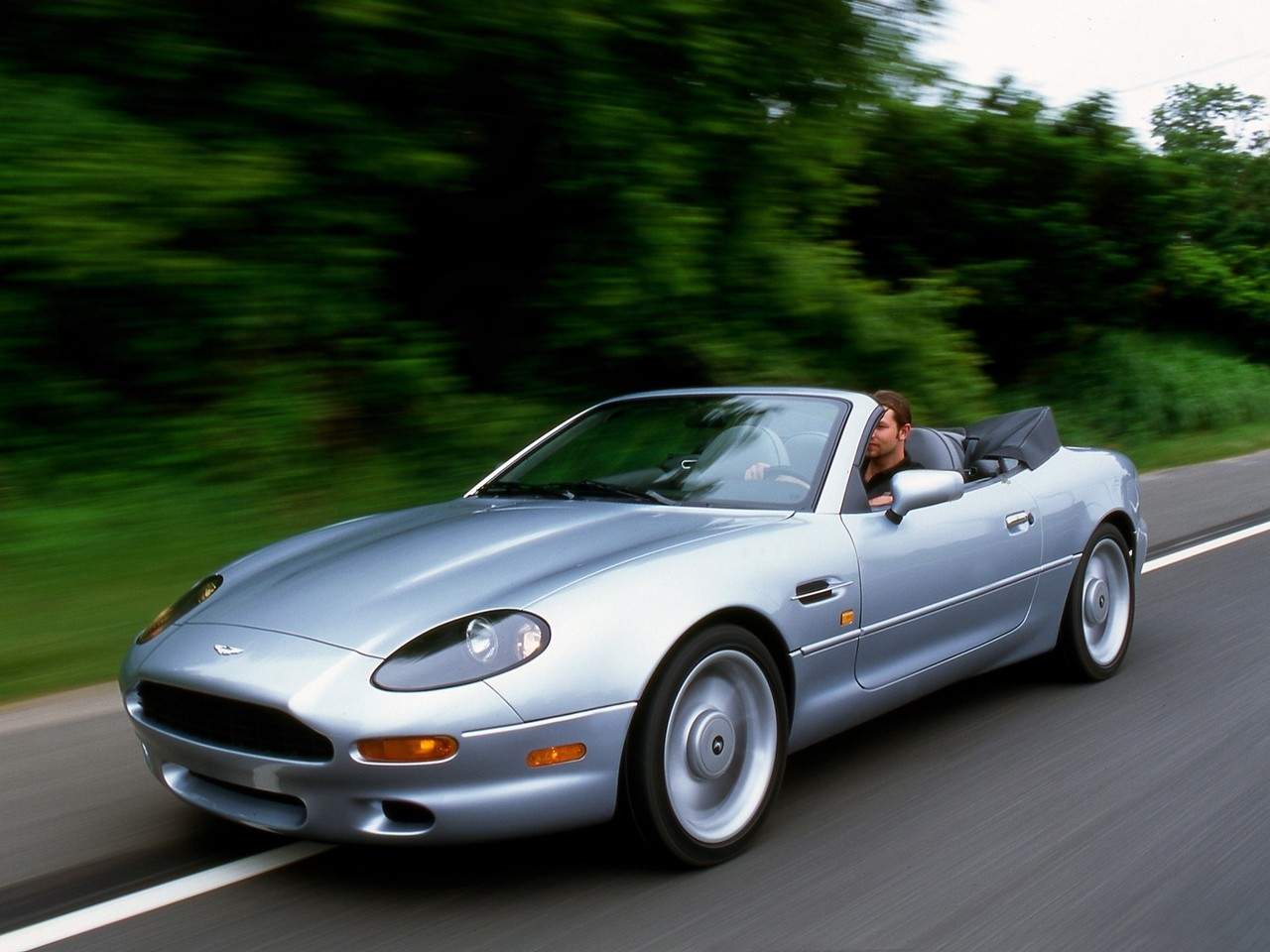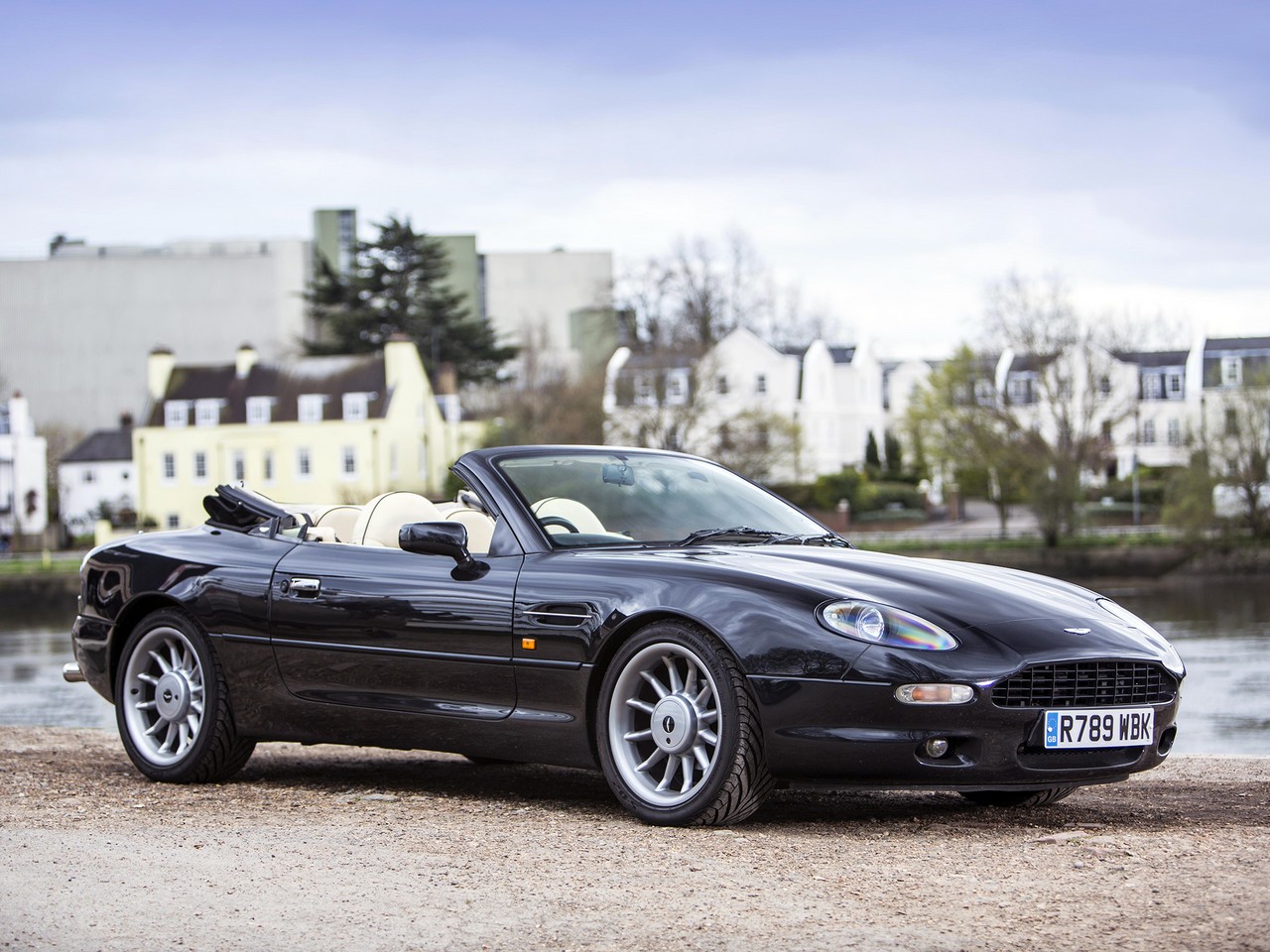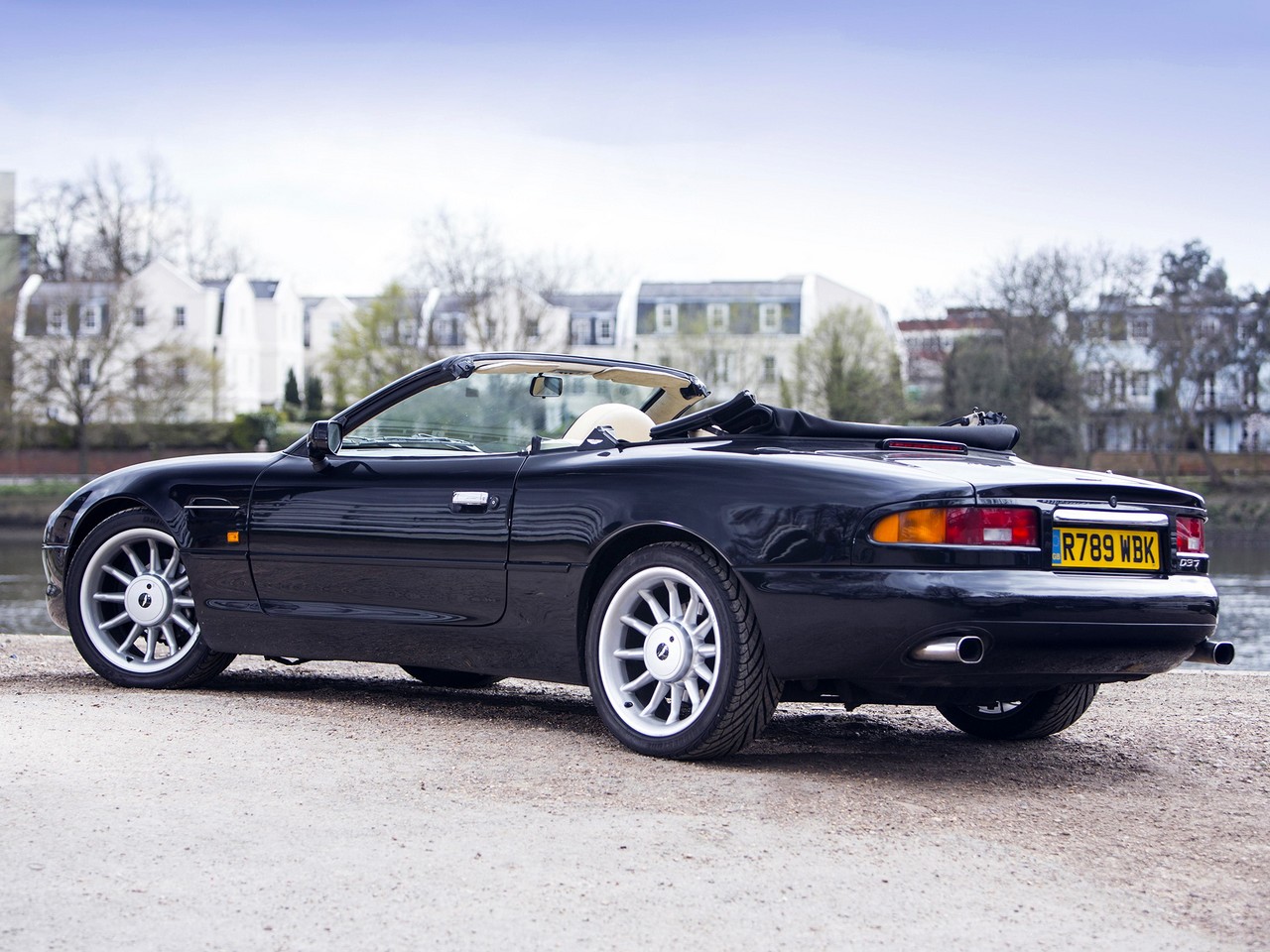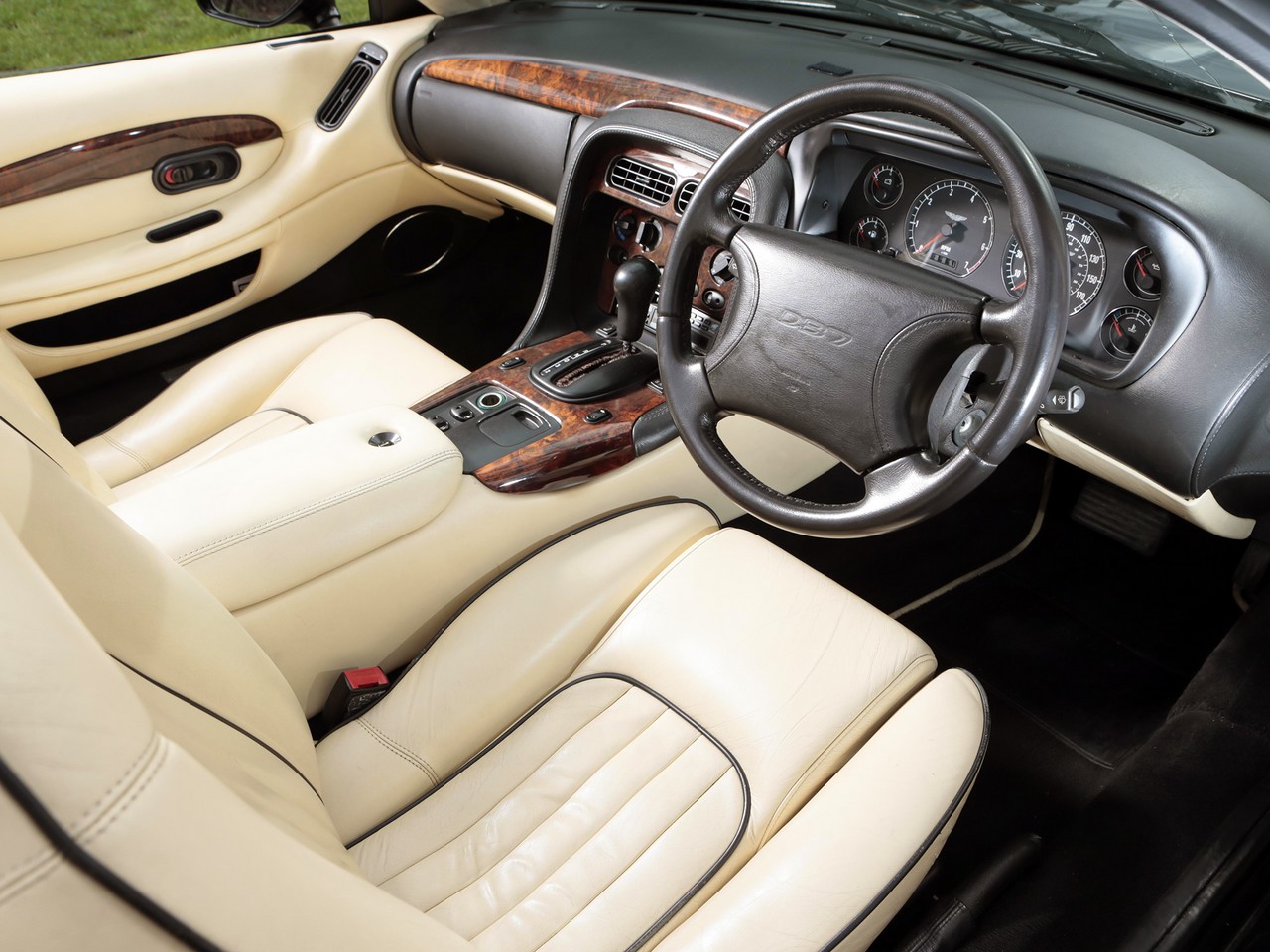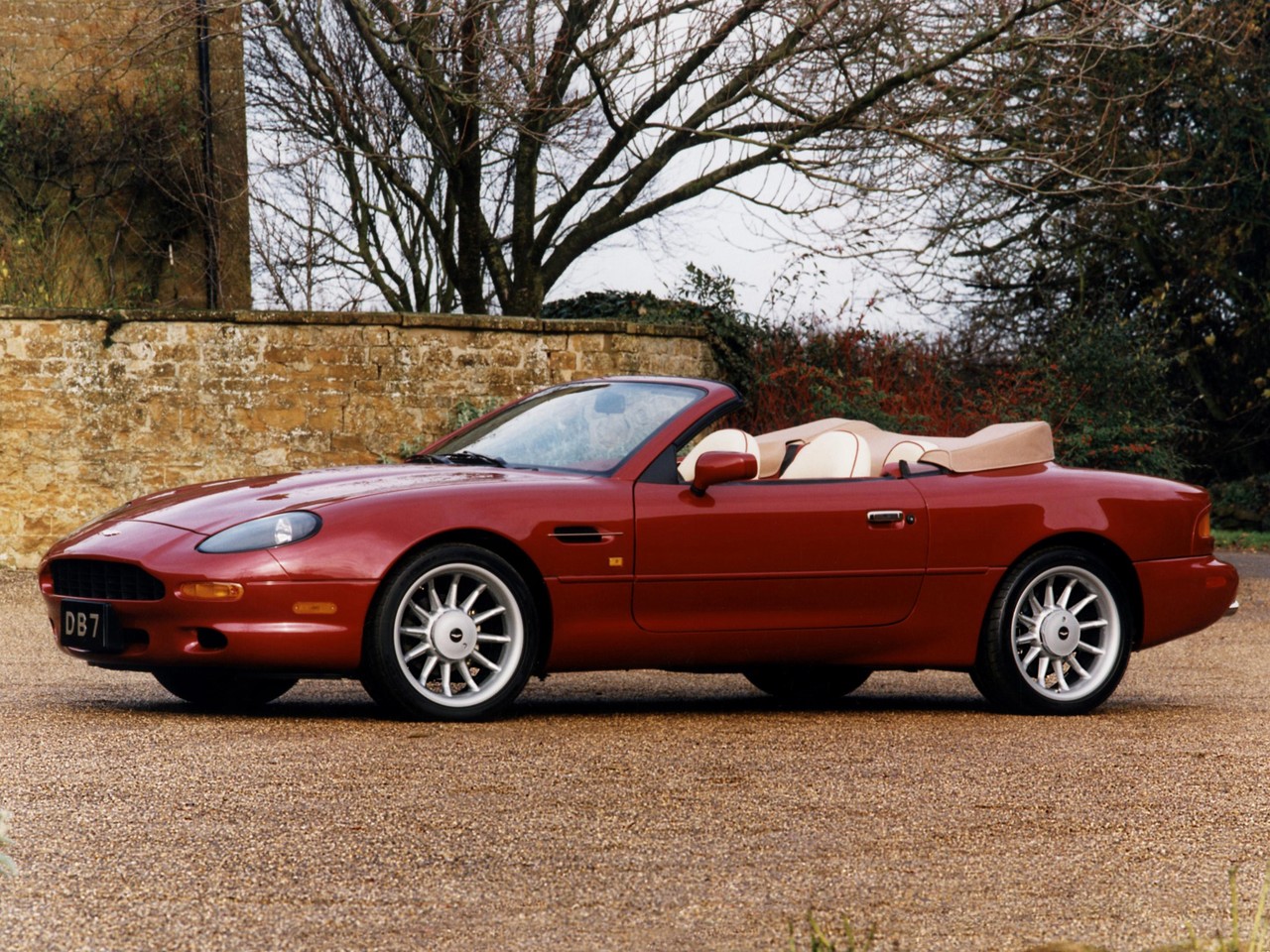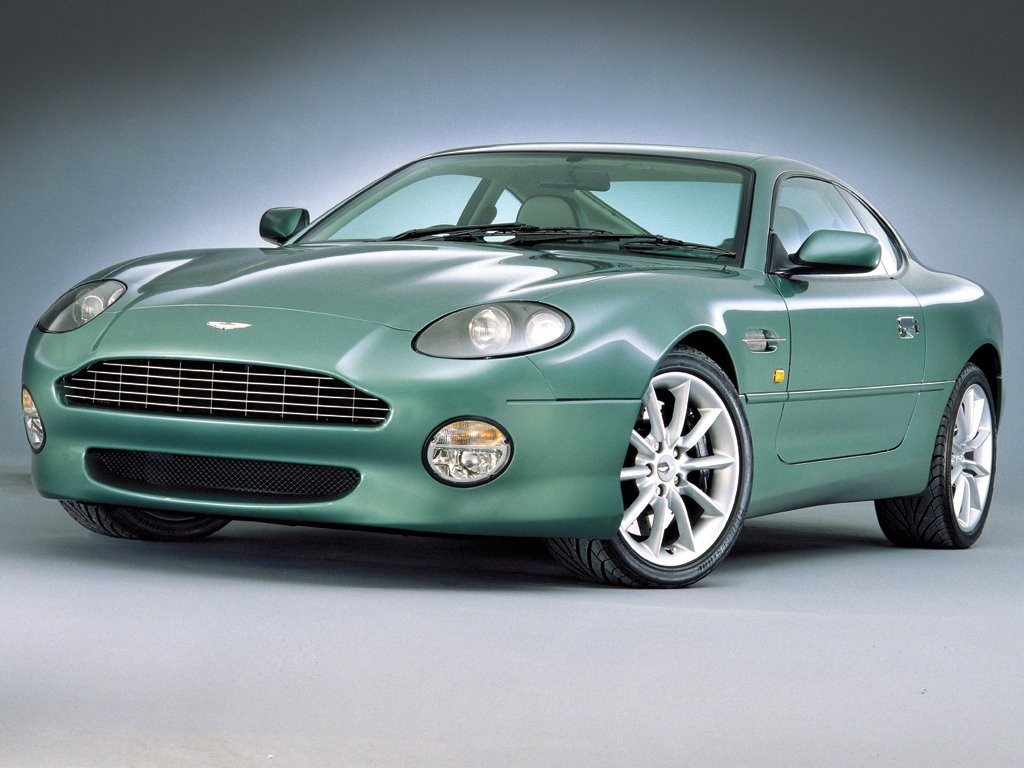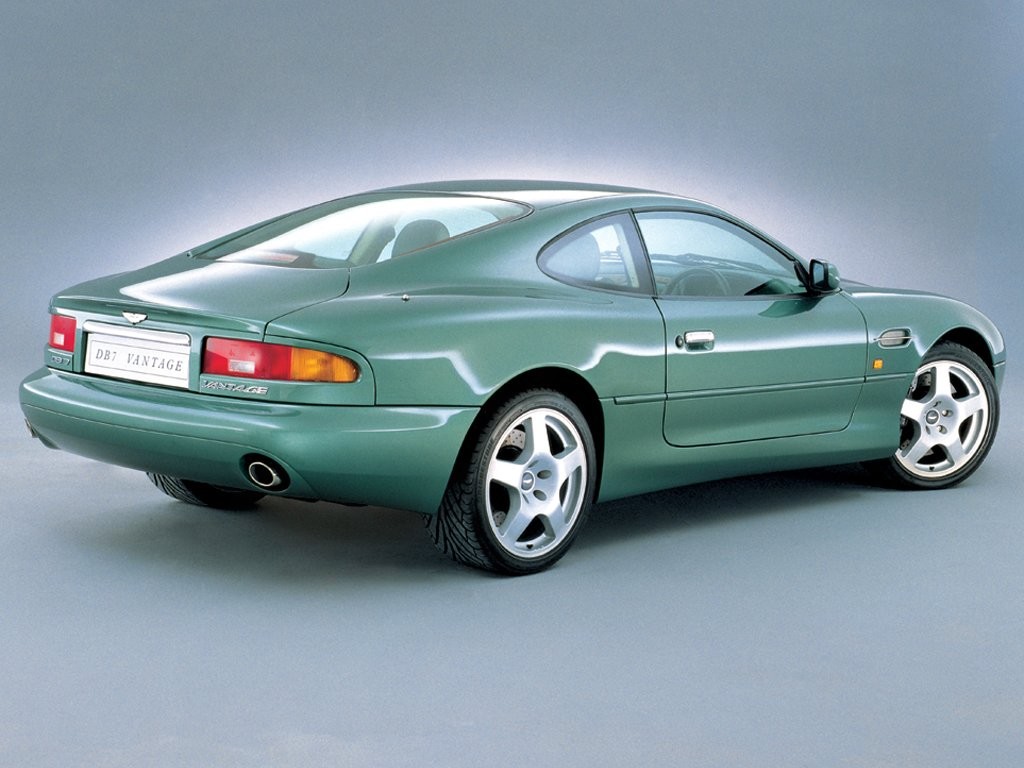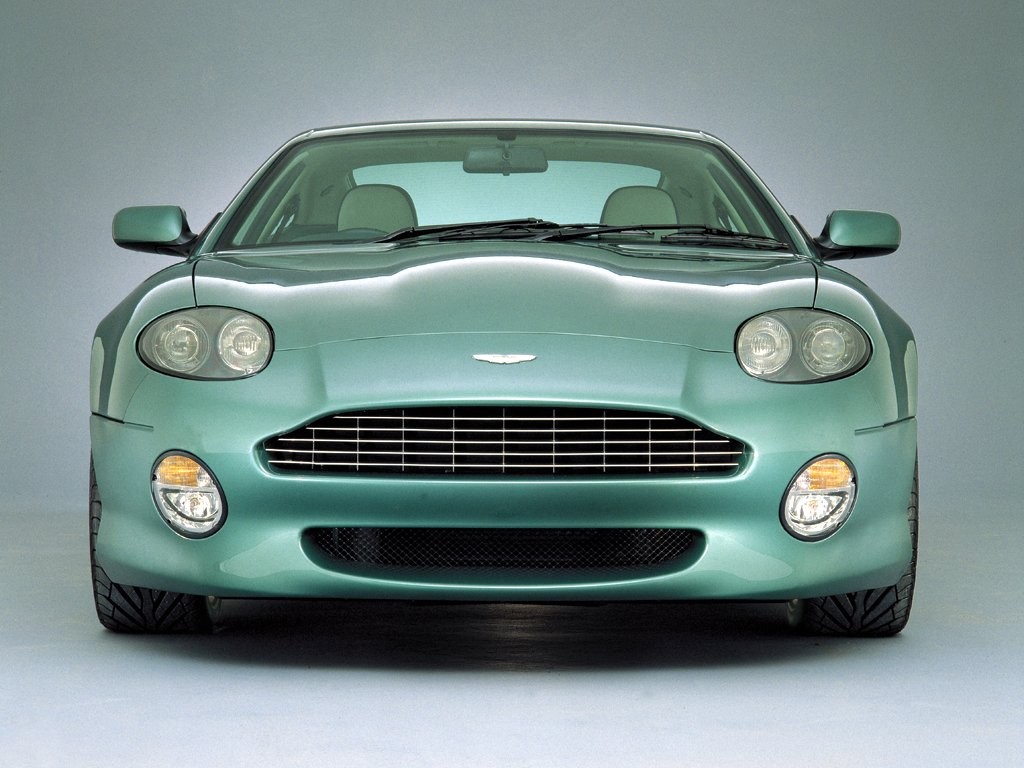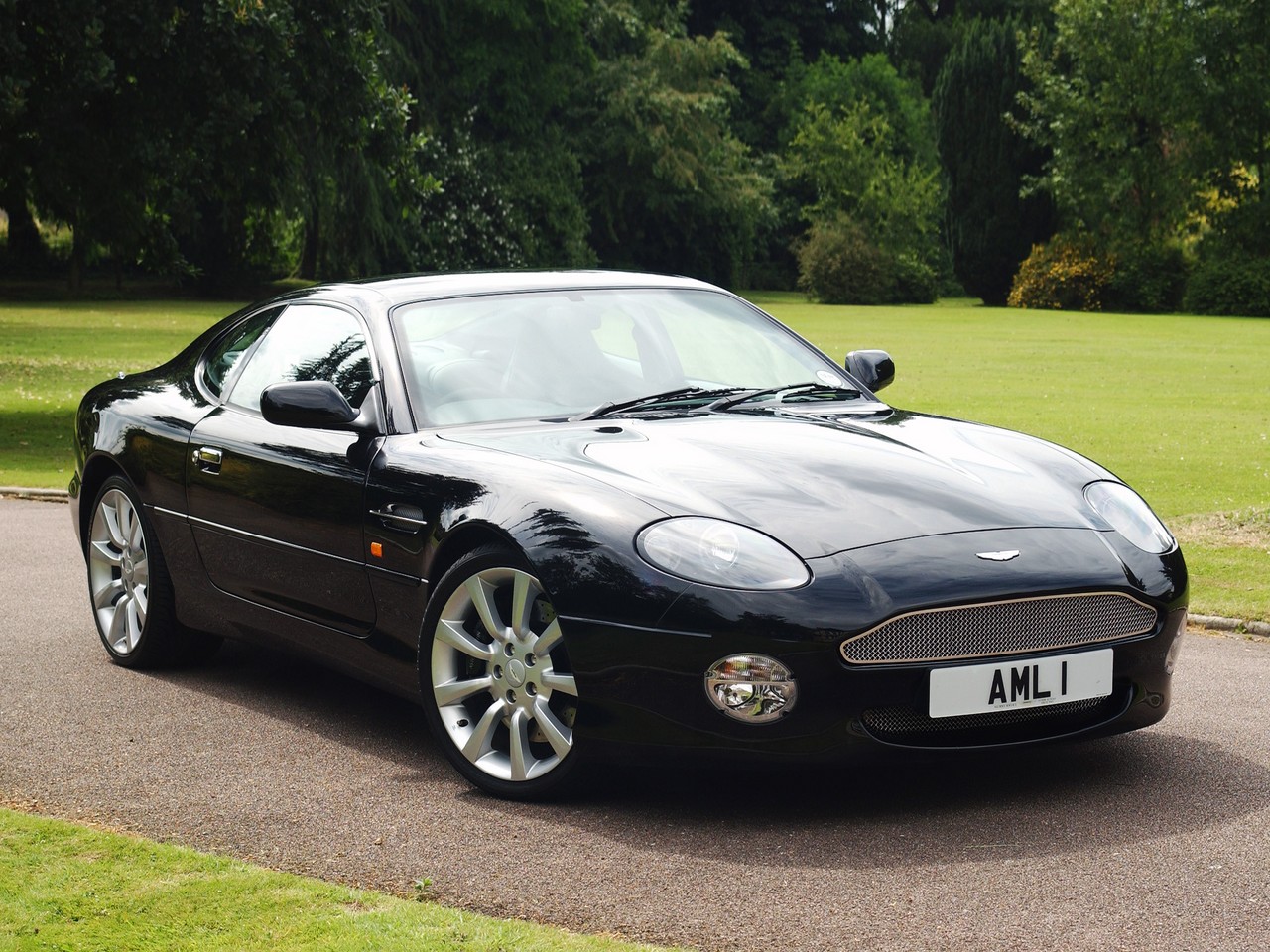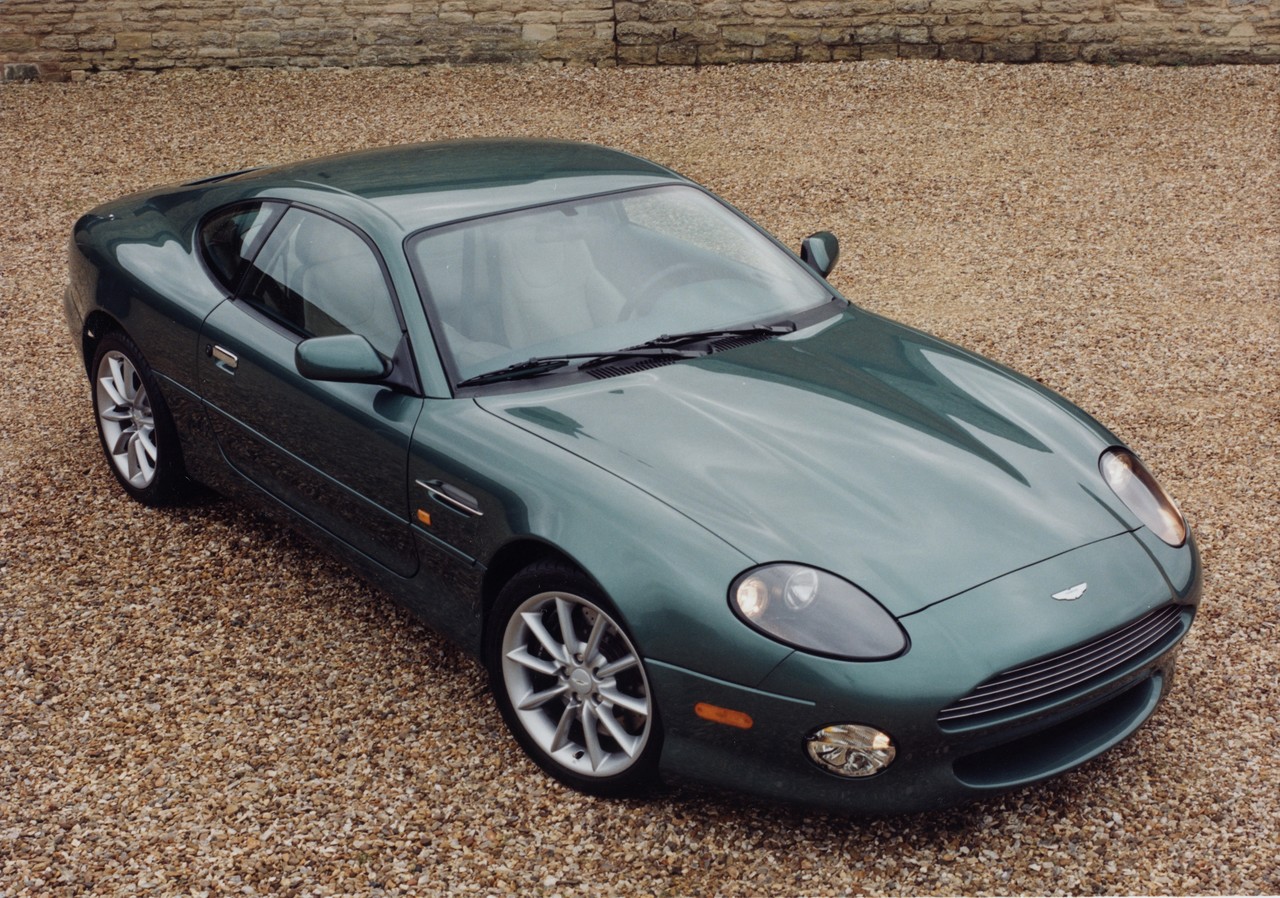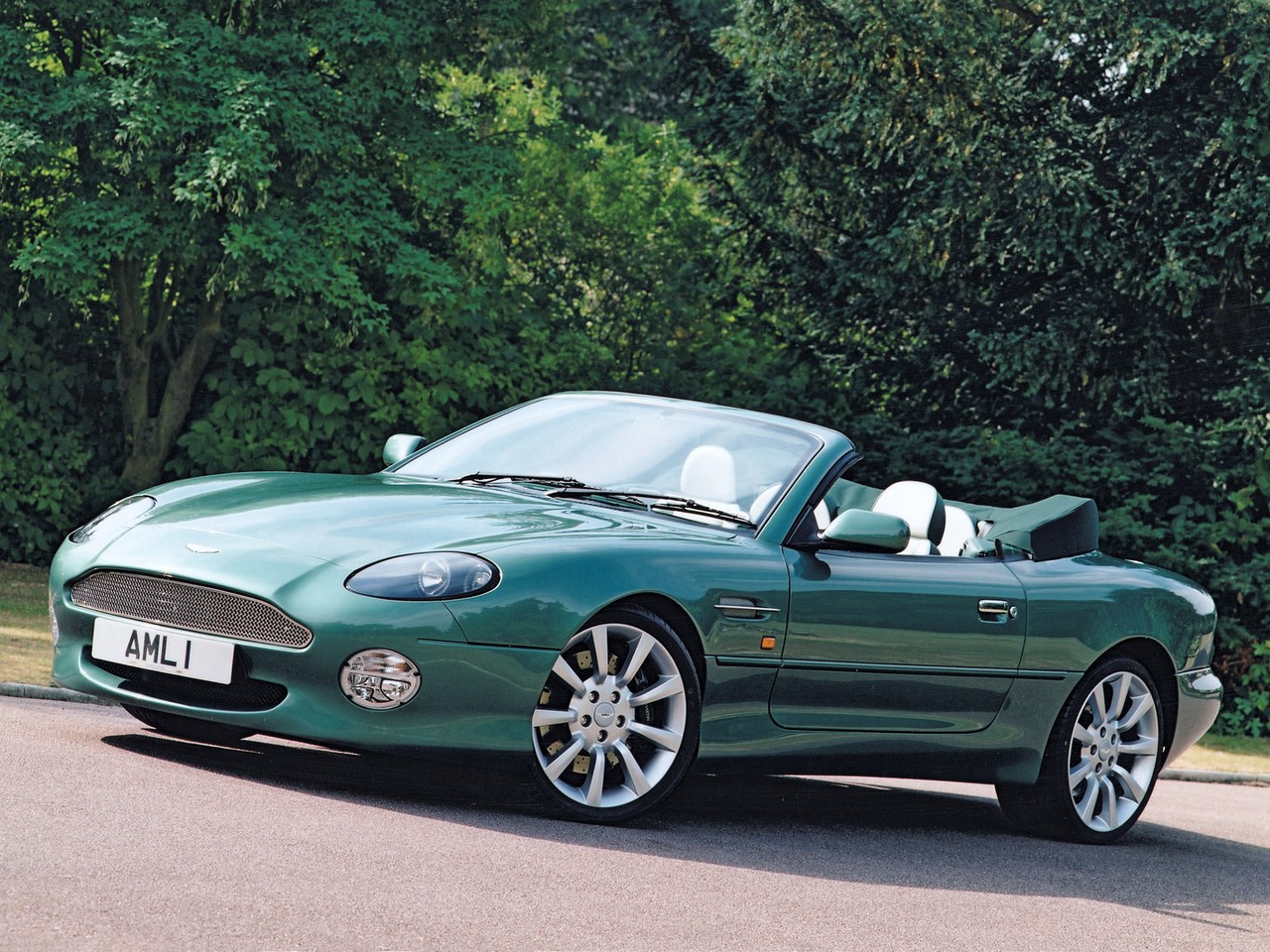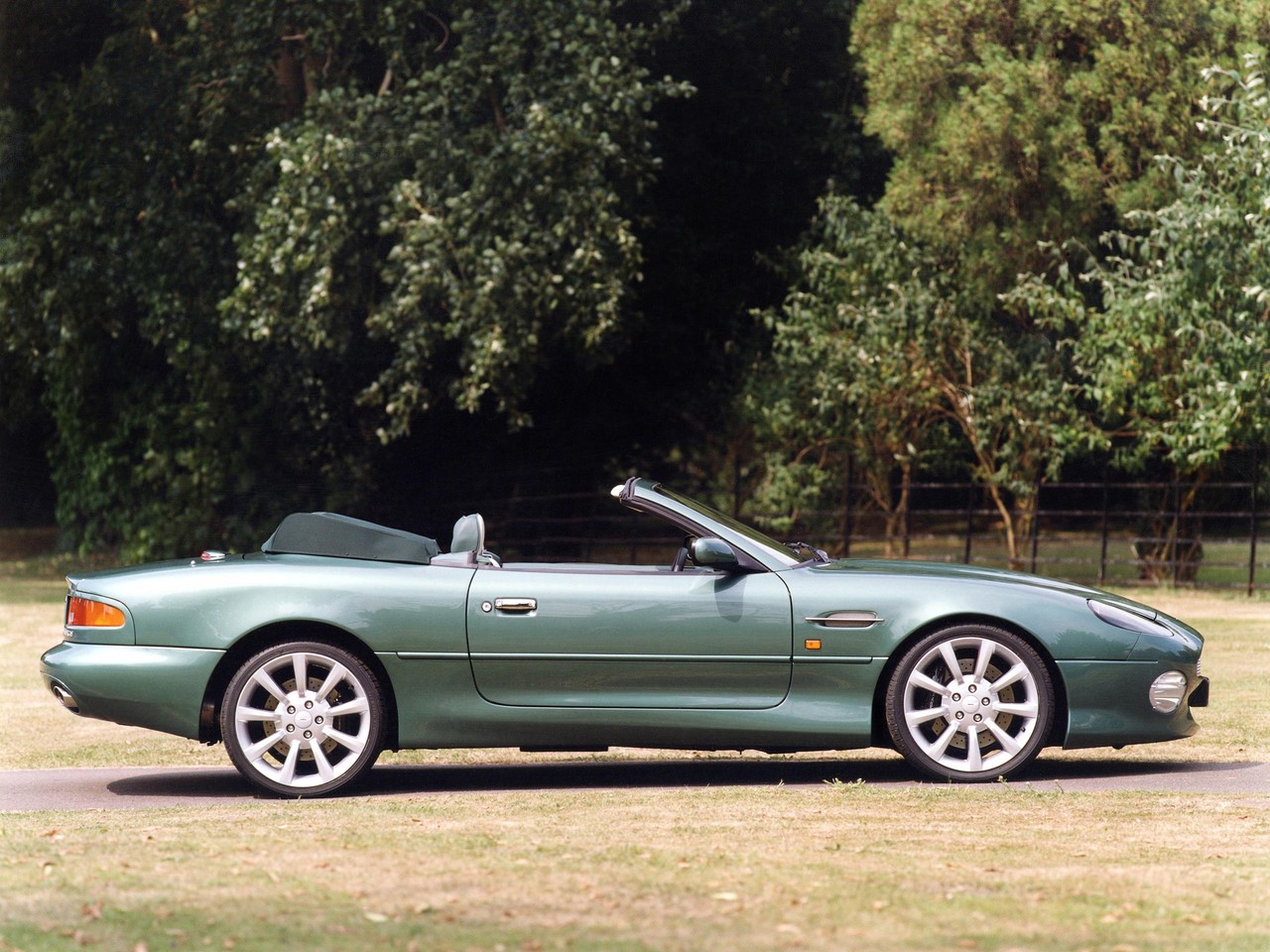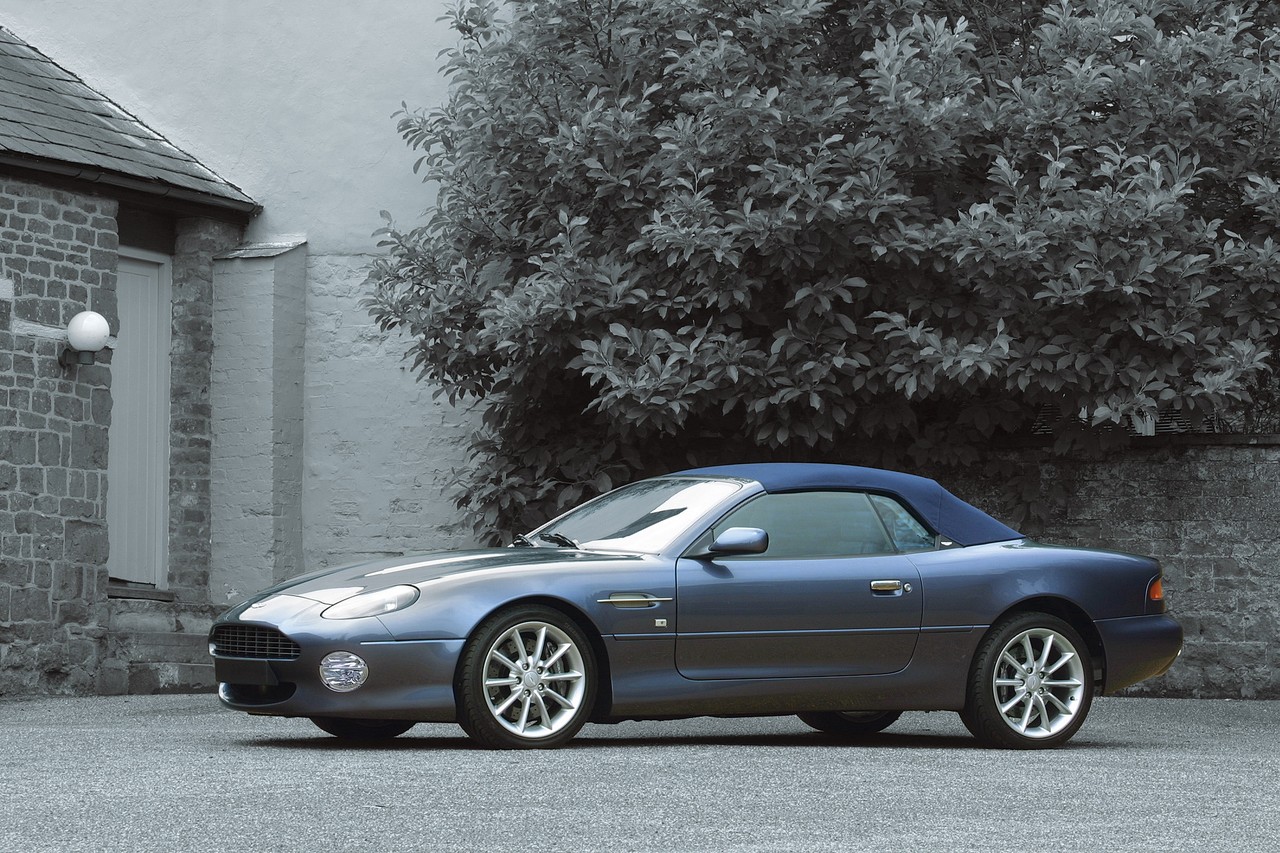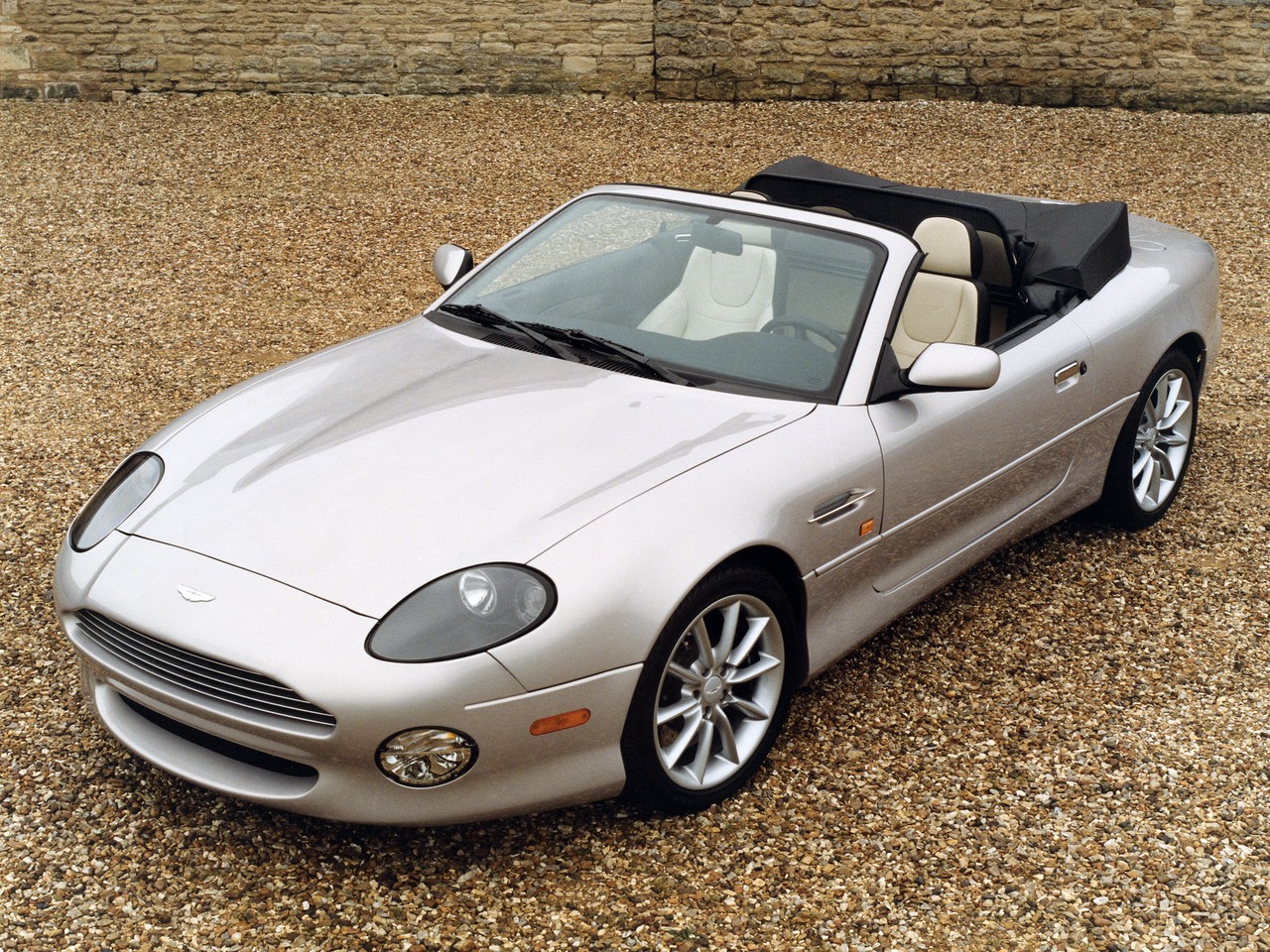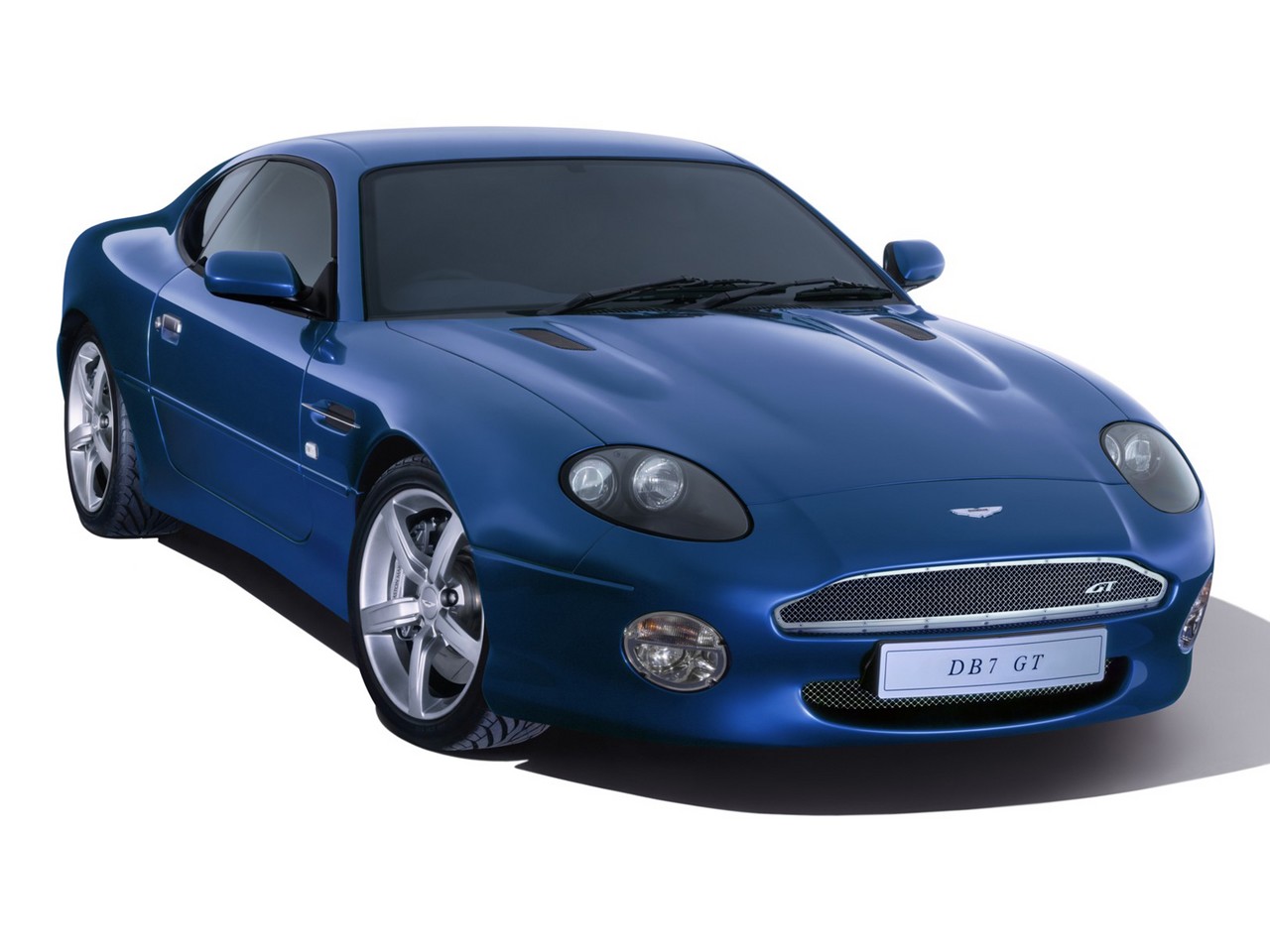
- Exquisite styling
- Powerful supercharged I6 or V12 engines
- Competent dynamics
- Awkward driving position
- Cramped rear seats
- Small boot
Review: Aston Martin Mk.I DB7 (1995-99)
Overview
Released in October 1995, the Aston Martin Mk.I DB7 was available as a coupe or convertible (‘Volante’) with two-plus-two seating. Manufactured in Bloxham, England, the rear-wheel drive Mk.I DB7 was powered by a 3.2-litre supercharged inline six-cylinder engine that was mated to either a five-speed manual or four-speed automatic transmission.
Engine
The 3.2-litre inline six cylinder engine had a water-cooled Eaton roots-type supercharger (drive by a toothed belt from the camshaft), double overhead camshafts, four valves per cylinder, Zytec engine management and a compression ratio of 8.3:1. With the five-speed manual transmission, the DB7 could accelerate from rest to 100 km/h in 5.8 seconds and had a top speed of 266 km/h.
Dimensions and suspension
The DB7 coupe was 4646 mm long, 1830 mm wide, 1238 mm tall and had a 2591 mm long wheelbase; kerb weight was 1725 kg. Furthermore, the DB7 had independent, double wishbone suspension front and rear.
| Body | Years | Trans. | Engine | Peak power | Peak torque |
|---|---|---|---|---|---|
| Coupe | 1995-96 | 5sp man. | 3.2-litre supercharged petrol I6 | 244 kW at 6000 rpm | 490 Nm at 3000 rpm |
| 1997-99 | 4sp auto | ||||
| Volante | 1996-99 | 5sp man., 4sp auto |
3.2-litre supercharged petrol I6 | 244 kW at 6000 rpm | 490 Nm at 3000 rpm |
Safety equipment
Standard safety equipment for the DB7 was limited to ABS.
Brakes
The DB7 had 284 mm ventilated front discs with four-piston calipers and 295 mm solid rear discs with sliding calipers.
Features
Standard features for the DB7 included 17-inch alloy wheels (18-inch wheels for the Coupe), a six speaker stereo with a radio and cassette player, climate control air conditioning, power adjustable front seats, leather upholstery, cruise control, leather-wrapped steering wheel, central locking, power mirrors and windows, an alarm and immobiliser.
As standard, the DB7 was also fitted with a limited-slip rear differential.
Brochure
Review: Aston Martin Mk.II DB7 (1999-03)
Overview
Released in November 1999, the Mk.II DB7 adopted the Vantage name and introduced new powertrains consisting of 5.9-litre (5935cc) V12 petrol engines mated to either five-speed automatic or six-speed manual transmissions. From 2000, the DB7 Vantage was available with a six-speed automatic transmission.
| Variant | Body | Years | Trans. | Engine | Peak power | Peak torque |
|---|---|---|---|---|---|---|
| Vantage | Coupe, Volante |
1999-03 | 6sp man., 5sp auto |
5.9-litre petrol V12 | 309 kW at 6000 rpm | 542 Nm at 5000 rpm |
| 2000-03 | 6sp auto | |||||
| GT | Coupe | 2003 | 5sp auto | 5.9-litre petrol V12 | 324 kW at 6000 rpm | 556 Nm at 5000 rpm |
| GTA | Coupe | 2003 | 6sp man. |
Safety equipment
Standard safety equipment for the Mk.II DB7 consisted of dual front airbags, ABS and traction control.
Brakes
The Mk.II DB7 had 355 mm ventilated and cross-drilled front discs and 330 mm ventilated rear discs, both fitted with four-piston calipers.
Features
Standard features for the Vantage included 18-inch alloy wheels with 245/40 front and 265/35 ZR18 rear Bridgestone tyres, six speaker sound system with a six-disc CD changer, air conditioning, power adjustable and heated front seats, leather upholstery, remote central locking, power windows and heated mirrors, a height and reach adjustable steering wheel, an alarm and immobiliser.
DB7 GT and GTA
Compared to the DB7 Vantage, the DB7 GT and GTA were fitted with a more powerful engine and aerodynamic enhancements such as additional sweeps for the undertray, wheel arch liner extensions and a revised bootlid which reduced lift by almost 50 per cent. The GT and GTA could also be identified by their five-spoke alloy wheels, mesh grilles and twin bonnet vents. Safety equipment and features, however, were substantially the same as the Vantage.
Brochures
- Brochure: Aston Martin DB7 Vantage (June 2002)
- Brochure: Aston Martin DB7 GT and GTA (December 2002)
Related links
